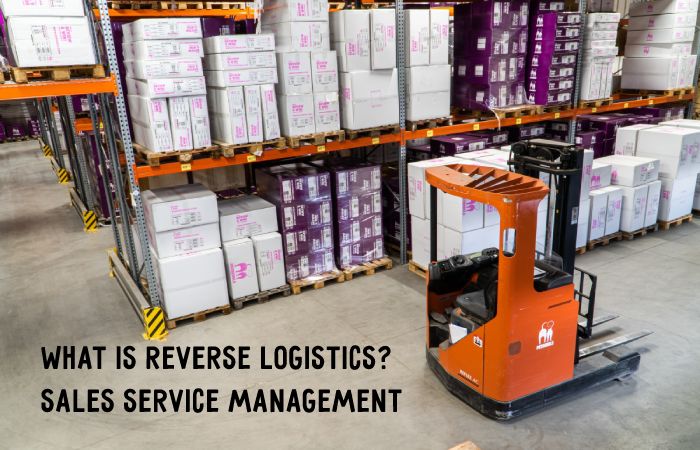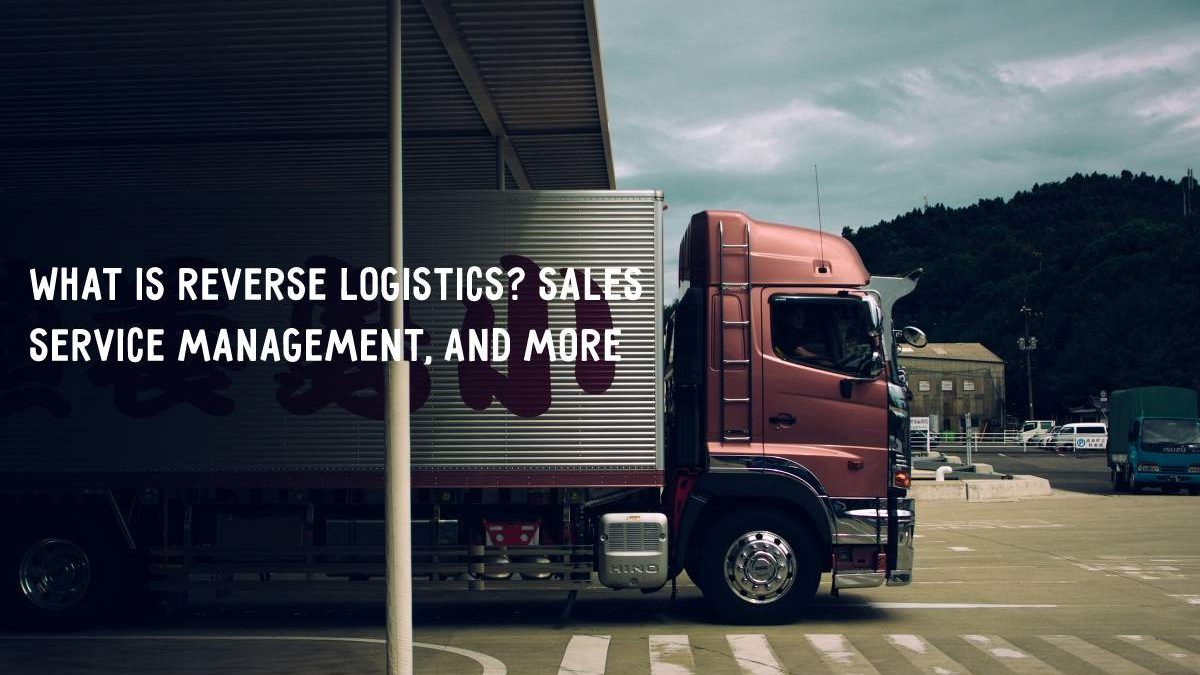Table of Contents
Reverse Logistics: Definition

Reverse logistics, translated from English, literally means reverse. That is to say, The management and optimization, through practices and processes, of the flows coming from the consumer towards his supplier. The supply comprises different physical, information, administrative and financial flows. These flows mainly relate to discharges from the supplier to the consumer and act strategically to satisfy the customer because it is delivered in good conditions and on time. The goods are in reasonable quantity and quality. But today, the satisfaction does not stop there. Indeed, customers expect quality service throughout the purchasing process and after-sales.
Different standards
In addition, companies are constrained by the changing standards and procedures imposed by the State and regulatory bodies to act with concern for ecology and respect for the environment surrounding us. There are then several forms of reverse logistics. Its best-known form is that of After-Sales Service. It consists of managing the commissioning, maintenance and repair of the products sold. But today, there is a trend towards new forms, particularly the recycling of WEEE, the management of defective products, the disposal and dissolution of overstock, the management of end-of-life items, or the management of returns. All this is linked to customer dissatisfaction, which has recently appeared.
After-Sales Service Management Generated By Reverse Logistics
When we talk about reverse logistics, we think of after-sales service. We think of the management of products that, through use, have been damaged and require repair. Or even defective products or products that have a defect. After-sales service management occupies an important place in reverse logistics. Industrial companies that sell repairable machines, electrical/electronic appliances, and household appliances must set up services for commissioning, maintenance, and repair of the goods so that customers can use their equipment as efficiently as possible. Easily and as efficiently as possible. This after-sales service increases customer satisfaction, who can call on the seller to resolve occasional malfunctions.
Management Of Defective Products
The After-Sales Service is also the management of defective or damaged products. Something in the manufacturing process has malfunctioned from time to time, resulting in a product that does not meet the set standards. These anomalies can sometimes not be detected with the naked eye, and the product is delivered as-is to the customer. Moreover, even if the companies make every effort to avoid this incident, the latter may be altered during the goods’ storage, transport, and delivery processes. In this case, the companies are tasked with recovering the goods in poor condition and offering and then delivering another identical product in good condition.
Management Of Returns From Dissatisfied Customers
E-Commerce As The Spearhead Of Reverse Logistics
E-commerce, having entered the market and occupying an increasingly important place each year, has given rise to a new way of consuming and has given rise to new problems for companies. We live today in a world where everything is going very fast, in which people no longer want to bother and waste their time on daily tasks. Consumers are looking to shorten their lives, and companies have understood that. Indeed, people today no longer have the time to take the time to shop in stores. Businesses then began selling online. The advantages are numerous, saving time, practicality, and sometimes even saving money.
Satisfied Or Refunded
Companies are also playing the “satisfied or refunded, free return” card, and this works very well with consumers who no longer hesitate to buy products on the internet, have them delivered to their home, test them, and if it does not correspond their expectations, send them back to the sender.
A challenge
It costs them nothing (or almost), and even if it means simplifying their lives, you might as well not be asked. However, the democratization of online shopping has led to many product returns. But then, how to manage this merchandise without it costing too much and taking too much time? This is the whole challenge of reverse logistics ! Companies were then forced to set up processes and establish procedures to readapt their organization and logistics to manage the increase in these returns. Efficient, well-established logistics optimize the physical flows that this generates as much as possible and control the parallel stocks that this causes. It is also a matter of optimizing the costs allocated to this type of action and minimizing their environmental impact.
Merchandise Recycling Management
A Touch Of Ecology
Returns reject. And materials derive from the design activities of transport and distribution of the goods were eliminated or ignore. For the most part. Raising problems in ecology and environmental protection. Companies are encourage to take charge of managing the return of goods and managing the recycling of these. The merchandise comes from the different activities of the company. Thus, we spoke above of the after-sales service management of defective, damaged, or even non-repairable products.
Unsold Stock Management
But there is also the management of unsold products. Which have also become obsolete, not because they have already fulfilled their lifespan. But because of various factors (fall in consumption, poor sales forecasts, change in the composition of a product or its packaging. Poor storage conditions which have altered the quality of the products. Health problems, etc.), the goods can be sell.
The Overall Logistical Impact
This second reason for returns, therefore, poses the problem of the management of the supply chain as a whole and thus pushes companies to redouble their vigilance and to constantly update themselves on the tools to help manage activities (SCM, SCP, APS, WMS, TMS, ERP . To manage its activities better. Recycling the goods is an advantage for companies, which can thus reuse the materials still in good condition from each product and reinject them into the production of the subsequent batches. This leads to a direct reduction in manufacturing costs related to the material purchase. This positively impacts the environment by lowering energy use and decreasing air and water pollution.
Reverse Logistics And Ecology
The mission of reverse logistics is, whenever possible, to give products a new use. And, ultimately, to reduce the final quantity of waste generated by its activities. Therefore, recycling is an excellent way to achieve this while reducing costs for the company. To have effective reverse logistics, it is crucial to involve consumers. Therefore, it is up to companies to apply them through advertising campaigns disclosing the role of citizens in the process and encouraging them to recycle.
Reverse Logistics And Overstock Management
What About Inventory Management?
Reverse Logistics poses dilemmas for companies on inventory management. Products from customer returns, after-sales service and unsold items arrive in large numbers and thus create additional stocks that companies must consider in their strategies. In seasonal sales. The products sold at specific times of the year (summer clothes, Christmas decorations, etc.), and for the flagship products renew each year, their returns must be manage and then store. During the rest of the year. These are stocks that are only use at specific times. However, they remain essential for the operation of the company.
An Extra Cost Though
Returns involve additional activities and transportation costs. They requirement a good classification of the goods received according to their reference and condition. Therefore, good traceability of products is essential to know where the goods come from, where they must go, and what process they must follow. This generates additional working hours for the staff and requires extra space to manage returns and store the goods. This results in significant costs associated with these activities.
How To Manage Returns?
Depending on its means, capacity and needs, the company must have either a specific area set up within the warehouse for returns or simply a new warehouse entirely devoted to this task. To manage at least the flows and activities related to these returns, companies can rely on personalized solutions offered by a WMS fundamental tool to handle this task. A WMS with the option of “receipt by return”, the purpose of which is to organize returns and identify their origin. This without interfering with or interrupting other warehouse operations. This makes it possible to manage the arrival of the goods at the warehouse and analyze the products’ condition and characteristics—all to assign a destination to the goods. Thus the system automatically generates orders to store the products, send them for repair, recycle, etc.
The Benefits Of Reverse Logistics
Reverse Logistics Enables A Competitive Advantage
Reverse logistics offers many advantages to companies. By reusing materials in the production process, which avoids using virgin raw materials and cuts energy consumption. The company reduces its conservational impact and improves its profitability. This enhances the company’s image. Indeed, reverse logistics offers a competitive advantage to companies. As customers are increasingly sensitive and demanding in the face of corporate environmental policies. It improves customer satisfaction through the “return” option for products.

